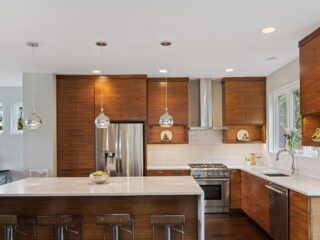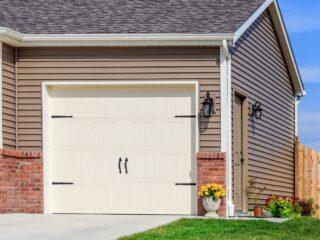
Looking to add a personal touch to your home decor? Why not try making your own closet doors? Not only will this project allow you to customize the style and design, but it can also be a cost-effective solution compared to purchasing pre-made doors. In this article, I’ll guide you through the process of creating your own closet doors from scratch.
Before diving into the nitty-gritty details, let’s take a moment to consider the different types of closet doors you can make. From traditional hinged doors to sliding barn-style doors, there are plenty of options to suit your taste and space requirements. Whether you’re looking for something sleek and modern or rustic and charming, I’ll provide step-by-step instructions for each type.
How To Make Closet Doors
When it comes to making closet doors, selecting the right materials is crucial. The material you choose will not only affect the aesthetic appeal of your closet but also its durability and functionality. In this section, I’ll provide insights into three popular options: wooden closet doors, glass closet doors, and metal closet doors.
Wooden Closet Doors
Wooden closet doors offer a timeless and classic look that can complement various interior styles. They come in a variety of wood types such as oak, pine, cherry, or mahogany, each with its own unique grain pattern and color variations. One advantage of wooden doors is their versatility; they can be stained or painted to match your desired color scheme.
In addition to their visual appeal, wooden closet doors are known for their sturdiness and longevity. However, it’s important to note that they may require regular maintenance such as polishing or refinishing to keep them looking their best over time. Also, be mindful of humidity levels in your home as excess moisture can cause warping or swelling of wooden doors.
Glass Closet Doors
If you’re looking to add a touch of modern elegance and brightness to your space, glass closet doors might be the perfect choice for you. These sleek and contemporary options allow natural light to flow through your closets while creating an illusion of more space in smaller rooms.
Glass doors come in different styles including clear glass for a minimalist look or frosted glass for added privacy. Some even feature decorative patterns or etchings that can enhance the overall design aesthetic of your room. It’s worth noting that glass doors may require more frequent cleaning compared to other materials due to fingerprints or smudges.

Measuring and Planning
Measuring the Closet Dimensions
When it comes to making closet doors, one of the first steps is to accurately measure the dimensions of your closet. This ensures that your doors will fit perfectly and function properly. To get started, grab a measuring tape and follow these simple steps:
- Measure the height: Start by measuring the height of your closet opening from top to bottom. Take note of any baseboards or trim that may affect the measurements.
- Measure the width: Next, measure the width of your closet opening from side to side. Again, consider any molding or obstacles that might impact the size.
- Measure the depth: In addition to height and width, it’s also important to measure the depth of your closet space. This measurement will help determine how much clearance you have for door installation.
Determining the Door Size
Once you have measured your closet dimensions, it’s time to determine the size of your doors. There are a few factors to consider when deciding on door size:
- Swing space: Consider whether you want your doors to swing inward or outward, as this will affect how much clearance is needed in front of your closets.
- Standard sizes: Check if there are standard door sizes available that can fit within your measured dimensions. This can save you time and effort in customizing door panels.
- Personal preference: Ultimately, choose a door size that suits both your practical needs and aesthetic preferences for your space.
In conclusion, choosing the right materials for your closet doors is essential for achieving both functionality and style. Wooden doors offer timeless charm and versatility, glass doors bring in natural light and a modern aesthetic, while metal doors provide durability and an industrial feel. Consider your personal preferences, budget, and maintenance requirements when making this decision.





